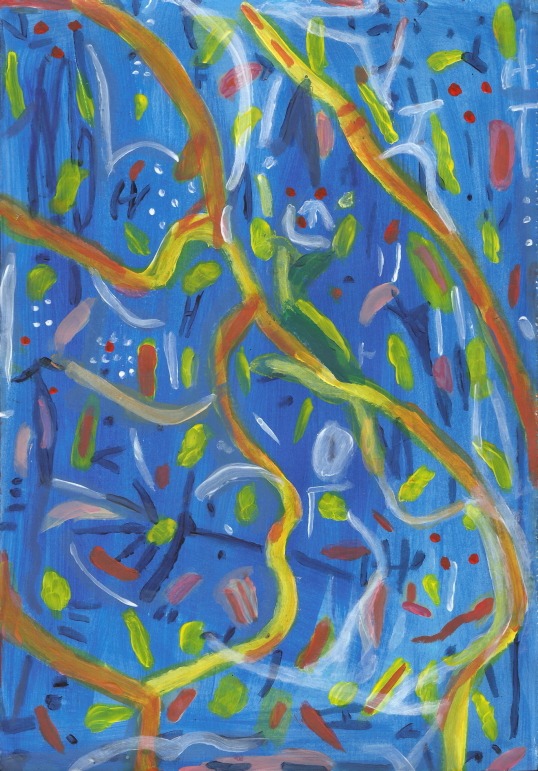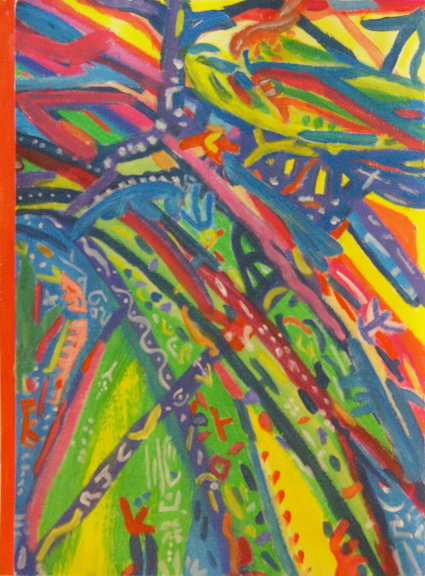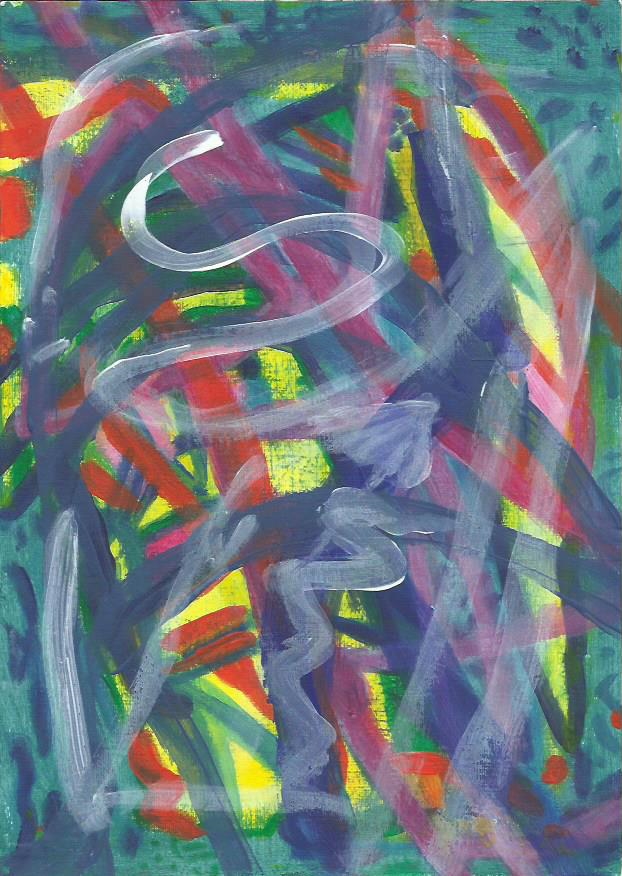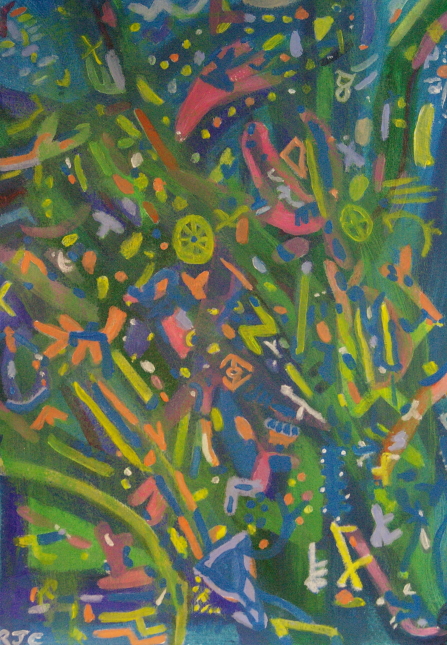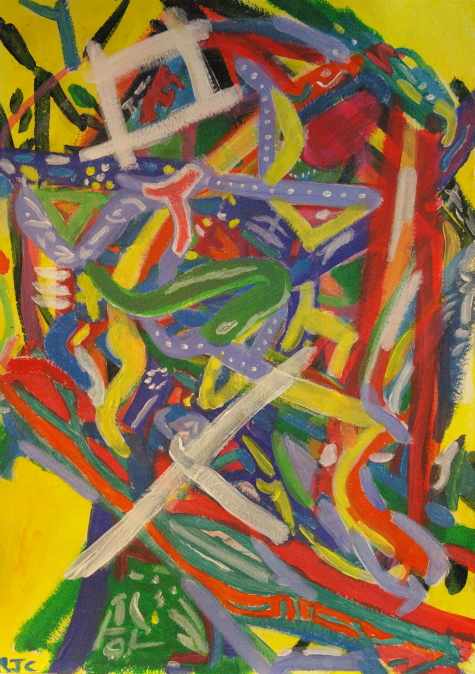There are four beautiful emotional states that can be cultivated and used as meditation objects in Buddhism, they are called the Brahma viharas (the sublime abidings). These are:
Metta (loving-kindness, friendliness, benevolence).
Karuna (concern and a wish to help those who are suffering).
Mudita (joy when other beings are happy).
Upekkha (equanimity).
Karuna is often translated as compassion. But the word 'compassion' means 'to suffer with' which is not the right way to look at karuna. Karuna does not suffer with others. It tries to help others, shows love, kindness and concern for beings who are suffering, but does not become sorrowful. To suffer with others is like seeing someone sinking in quicksand and then immediately jumping in next to them, it doesn't help either person and both end up being pulled under. It can be tricky, to find the right balance, to be able to feel empathy for others without suffering oneself.
Mudita is to feel joy when other beings are happy. Happiness is such a rare event in this life for many of us. If you see a being who is happy, then smile and enjoy their happiness too, however brief it may be. In this world happiness can be hard to find and doesn't last, so rejoice when you see it.
Equanimity is to be calm among those who are not calm. To accept the way things are without being pulled under by them. To not allow the suffering of the world to drag one down into sadness and depression, as that is no help to oneself or others. It is to keep one's composure and balance of mind even amidst the suffering in the world. This is where contemplation of the changing nature of things, of impermanence, of not-self can be helpful. There are tragic things that happen in this world, and sometimes there is nothing anyone can do to help, or put things right. One wishes those beings well, and that is a noble wish, but if one becomes depressed because of it, that is not much help to the world. There's enough sadness and sorrow, if you can become someone who keeps their head while others are losing theirs it can be a real blessing for others in difficult circumstances, and help bring peace, calm and balance to another's mind.
Feel love for all beings, help those that you can, rejoice with those experiencing happiness, and feel equanimity for the difficult things in life one cannot change, for those beings who can't be helped. Metta and equanimity is like a knife and fork, they complement each other perfectly and bring balance to the mind. The warm heart of metta and the cool head of equanimity.
Sometimes I like to give peanuts to some crows when I go out for a walk. The crows will fly down to greet me and I feel metta well up in my heart for them. I know they are hungry so I feel karuna for them. I give them some peanuts. This makes them happy, and then I feel joy seeing how happy they are to get the peanuts. Unfortunately I don't have enough peanuts to feed all the birds and there are some birds perched nearby who didn't get any, but I have nothing left to give them. I wish them metta, but accept that I can't feed all the hungry birds in the world, as much as I wish I could. Equanimity is also how I feel when I see the crows are satisfied and not hungry anymore, and I then drift into a contented serenity. This brings a composure that leads to stillness and the other side to equanimity which is when one is in a state of equipose and all the different energies of the mind feel balanced and tuned just right. Like being in the zone. Centred. Composed and still, while everything around you is in a state of flux. Walking feels like stilness in motion.
In the beginning, one can cultivate these emotions by saying phrases that invoke it in the mind. Such as may all beings be happy, may all beings be peaceful, may all beings be safe and at ease. One can use whatever phrases one likes to help generate the feeling of unconditional love within.
If it feels difficult it is often because one needs to practise metta for oneself first.
Traditionally one is taught to first practise metta for oneself before radiating it to other beings. This is not wrong and it is not selfish, it is an act of kindness to oneself and others. It is much easier to make friends with other beings if one has become a friend to oneself first. So one can start the practice by saying metta phrases for oneself, may I be well, may I be happy, may I feel safe and at ease, and when the body feels satisfied, one can then radiate that energy out to the world, to all beings everywhere.
Sometimes the feeling of metta can be brought up from seeing something in nature, wildlife, flowers, trees, the sea, colours, the sky, clouds, beautiful sunrises or sunsets, the snow, the sound of rain.
It can also be brought on by memories of kind things one has done in the past, or kind things others have done. It can be generated by thinking of inspiring saintly figures, and characters in stories who radiate the beautiful qualities of the heart.
It can be thinking about angels, devas, ancestors, heavenly realms. Something imaginary, or real. Sometimes I imagine the world at peace with no more violence and war, no more stinginess or cruelty. Just this golden place where all beings live in friendship and peace with one another. It doesn't matter if it isn't how the world actually is, it is the wish for the world to be like that which can bring the feeling of metta up inside. It can also be one's children, one's parents, one's family, one's friends, a beloved pet,. One can recite chants about metta that help bring up the feeling of metta also.
Karuna is basically metta for beings who are suffering. And Mudita is metta for beings who are happy.
There are many ways to find one's way into the sublime abidings. Once there you want to try and keep the momentum going till it becomes strong enough to not need any more input. When the feeling of metta saturates the whole body, one can take the hand off the steering wheel of effort and stop the doing, thoughts will settle into a contented warmth and one can just rest in that feeling and enjoy it, becoming a lucid passenger, depending on the momentum consciousness will just cruise into a state of peaceful stillness that has a healing effect on the body and the mind. This can connect one to deeper mind and the wisdom it contains. There is a deeper wiser part of the mind that wants to talk to us, but we are often too caught up in the self-centred dream to hear what it is saying to us. When we get very still and quiet and are content, not wishing to be any place else, when the mind and body is at ease, and the energies of the mind become balanced, when one is no longer being pulled this way or that by the senses, truth reveals itself and one can see things clearly, then wisdom develops and one can direct that lucid mind state towards anything and understand it better, because one is less deluded and pulled by greed and aversion, one is able to see things better, like having a clean lens.
Not always easy to do though. It takes practise, like anything we learn in this life, repetitive practise, but it is worth it. Over time as one keeps up the practise it starts to develop a momentum of its own going one day to the next, and this momentum grows stronger, builds up an energy of its own. When it gets strong enough, you may not need to say the phrases anymore, you can just connect instantly with the feeling and bring the energy up at will without using thought or words.
The practise of the Brahma viharas has a lot of benefits for oneself and others.
But there can be days I find it hard to practise them. I don't judge myself any more for that (I used to), but now it is okay if that happens. I just try to flow with where I'm at and work with what's in front of me and investigate that. There are other emotional states one can practise, such as mindfulness, investigation of the here and now, reflection, contemplation, studying, serenity, meditation, the stillness and composure of samhadi, the balance of equanimity, and others that don't spring to mind, but the palette of positive emotions is quite varied and wide, which is a good thing to know. My moods change quite rapidly, and I have found it helpful to have many strategies to hand.
Sometimes unfortunate events happen to us in life. Shit happens. The Buddha's metaphor of the second arrow can be helpful to remember here. An archer gets shot, then does a strange thing, he takes out his bow and shoots himself with a second arrow. The first arrow he couldn't do anything about, but the second arrow he didn't need to shoot, this is the mental suffering we create for ourselves after the event, such as the craving for things to be different, the way we might take it personally. All this just adds extra suffering to what is already an unfortunate event. The first arrow we couldn't do anything about; but the second arrow we can train ourselves not to shoot, and not add more pain to what is already there.
Not easy, at least not for many of us. There are some rare lucky folks who become fully enlightened straight away. But for most, it is a gradual process, that happens in stages, and it can go on for lifetimes. The concept of not clinging is easy enough to comprehend but difficult to practise, which is where the noble eightfold path comes in, that is the training that gets you there.
Beings who get enlightened quickly may be beings who have encountered this before in previous lives, who were already pretty far along in their development, so it didn't take much to bring that final liberating insight that permanently set them free from clinging.
Enough waffle from me anyway. I am not trying to convert anyone to Buddhism, or change anything. I do care about the Earth though and the suffering of this current age, brought about by greed, hatred, and delusion. The mass extinction event and endless violence now happening across the planet, which threatens many different species of life, including our species: homo sapiens.
It is a shame we can't make peace with one another, war is so horrific and unnecessary, causes so much misery and destruction. Why do we still have war? It is now 2023, and we seem to be more war-like than ever, with truly horrific weapons of mass destruction, of cruelty and violence. Why can't we transcend this? Why is it so hard for us to be kind to one another, to live in friendship and harmony with one another and all the other beings we share this planet with.
Why can't we share resources with one another, so we all live comfortably and in harmony? It is a shame that out of all the animals here on this planet, humans have become the most violent and cruel of them all. We think ourselves better than animals because we have all this technology; but the way we behave, we come across as lesser beings, as dangerous and not to be trusted. No other being on this planet behaves the way we do and causes so much destruction. Future generations will look back on this time and wonder why it got like this, why we couldn't change ourselves and put a stop to this madness.
We can be better than this. That is why I am training the mind, why I follow the noble eightfold path. It is because of greed, hatred, and selfishness that this world is so dark. If humans can free themselves of these three psychic poisons, imagine what a world we could build together, what a world future generations could inherit. The world doesn't have to be this way. Things can change for the better, if we have the inclination to, if enough of us choose to.
Still, I have hope that all is not yet lost. I think in the end there will be enough of us that care, who will make the changes necessary to create a better world. One that is in harmony with the other beings we share this planet with, one where there is no more inequality or poverty. One where the other species of life on this planet are treated with respect and friendliness, left to live their lives in peace and dignity. Without a thriving eco-system we won't survive.
I am not particularly gifted at anything, not very good at communication, I don't have much money, and I am not a leader; but I will do the best I can with what I've got, which isn't a lot, but I will try anyway. We all have different talents, and this is great, it wouldn't work if we were all exactly the same, our differences mean we work well as a team.
Anyway getting a bit side-tracked here. I am not trying to convert anyone to Buddhism, I am not proselytising, nor am I telling anyone how to live their lives. I have given up trying to change the world. What another being does with their life is their karma, and what I do is mine. I am not the greatest writer in the world, but maybe some of what I write may be helpful to others, both here and now, and perhaps in the future. I have struggled most of my life with mental health problems, and Buddhism has really helped me, and if any of what I share is helpful to others, even just one person, it makes it all worth it.
Take care everyone, peace and metta. May we all realise the end of greed, hate, and delusion. May we all experience the lasting peace and happiness that comes from an unhindered mind.
